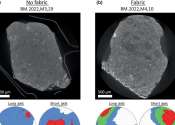Scientists find de-icing agent remains stable at more than a million atmospheres of pressure
Lawrence Livermore National Laboratory scientists have combined X-ray diffraction and vibrational spectroscopy measurements together with first-principle calculations to examine the high-pressure structural behavior of magnesium ...







